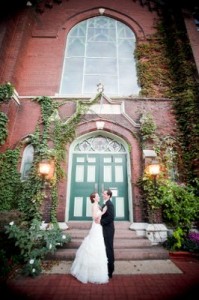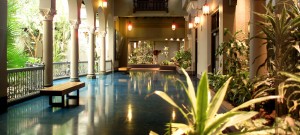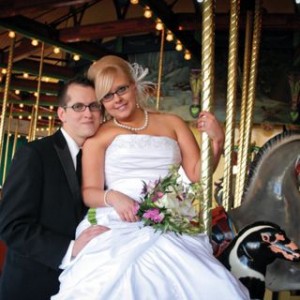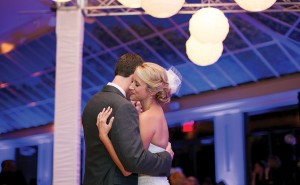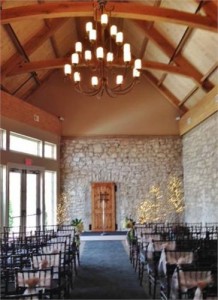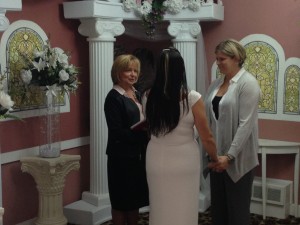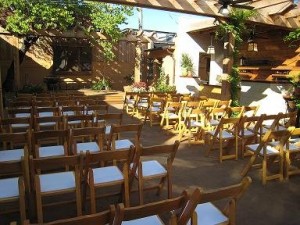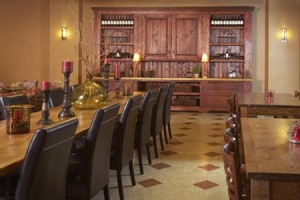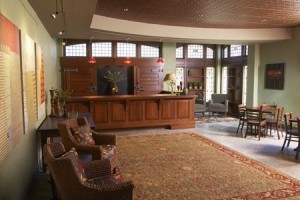 In 2007, Emeritus Commissioner Lammert volunteered to redesign the plantings for the Flag Circle that would be consistent with the earliest images of the gardenesque style in which Tower Grove Park is noted. She prepared drawings that we submitted to the Orthwein Family Foundation which resulted in a grant of $200,000 for the renovation of the Flag Circle plantings. This plan involves new lighting, an irrigation system, electrical support for the irrigation system, grading, sod, new plantings, and replacement of trees. The essential plan emphasizes simplicity and reinforcement of the east-west axis through the Park.
In 2007, Emeritus Commissioner Lammert volunteered to redesign the plantings for the Flag Circle that would be consistent with the earliest images of the gardenesque style in which Tower Grove Park is noted. She prepared drawings that we submitted to the Orthwein Family Foundation which resulted in a grant of $200,000 for the renovation of the Flag Circle plantings. This plan involves new lighting, an irrigation system, electrical support for the irrigation system, grading, sod, new plantings, and replacement of trees. The essential plan emphasizes simplicity and reinforcement of the east-west axis through the Park.
Piper Palm House
 On Saturday, May 2, 1998, Mayor Clarence Harmon rededicated the oldest standing greenhouse west of the Mississippi. The renovated South Palm House was re christened in honor of Vernon W. and Marion K. Piper, principal donors of the restoration. According to David MacAdam (1883) , the South Palm House: “Was established for the purpose of supplying the park with ornamental tropical plants, which are used in summer for decorative groupings on the lawns, and in the winter are tastefully arranged within the structure, forming a very interesting feature for the inspection of visitors. It is built of brick, with ornamental pilasters and stone caps; is situated near the north gate, and is oblong in shape, with the long sides to the north and south. The principal doorway faces to the south, and is ornamented with brick columns, a stone coping and metal flower vases, and at the east and west ends there are smaller doors and similar ornamentation. The roof is supported on iron girders and covered in slate and glass, and the whole structure is substantial in character, carefully finished, and is an ornament to the park.” Although it was built in 1878 to house palms, the structure described by MacAdam is acoustically “live” — the perfect spot to listen to selections by Mozart, Verdi, Beethoven,. Rossini, Wagner & Gounod performed by eager musicians of the St. Louis Symphony Orchestra. A more modest structure than the glorious glass Palm House built at the Royal Botanic Gardens at Kew 1844-48 (and thus known to both Shaw and Gurney ), the symmetrical nine-bayed red-brick Piper Palm House was built from plans provided by George I. Barnett and Isaac Taylor modeled instead on another older London conservatory, the Kensington Palace Orangery. It is also in turn the clear predecessor of the 1882 Linnean House at the Missouri Botanical Garden. To the north of the 1878 structure stands a second and virtually identical Plant House built in 1885. The glass greenhouse to its rear dates from 1916.
On Saturday, May 2, 1998, Mayor Clarence Harmon rededicated the oldest standing greenhouse west of the Mississippi. The renovated South Palm House was re christened in honor of Vernon W. and Marion K. Piper, principal donors of the restoration. According to David MacAdam (1883) , the South Palm House: “Was established for the purpose of supplying the park with ornamental tropical plants, which are used in summer for decorative groupings on the lawns, and in the winter are tastefully arranged within the structure, forming a very interesting feature for the inspection of visitors. It is built of brick, with ornamental pilasters and stone caps; is situated near the north gate, and is oblong in shape, with the long sides to the north and south. The principal doorway faces to the south, and is ornamented with brick columns, a stone coping and metal flower vases, and at the east and west ends there are smaller doors and similar ornamentation. The roof is supported on iron girders and covered in slate and glass, and the whole structure is substantial in character, carefully finished, and is an ornament to the park.” Although it was built in 1878 to house palms, the structure described by MacAdam is acoustically “live” — the perfect spot to listen to selections by Mozart, Verdi, Beethoven,. Rossini, Wagner & Gounod performed by eager musicians of the St. Louis Symphony Orchestra. A more modest structure than the glorious glass Palm House built at the Royal Botanic Gardens at Kew 1844-48 (and thus known to both Shaw and Gurney ), the symmetrical nine-bayed red-brick Piper Palm House was built from plans provided by George I. Barnett and Isaac Taylor modeled instead on another older London conservatory, the Kensington Palace Orangery. It is also in turn the clear predecessor of the 1882 Linnean House at the Missouri Botanical Garden. To the north of the 1878 structure stands a second and virtually identical Plant House built in 1885. The glass greenhouse to its rear dates from 1916.
 With interior restoration complete, The Piper Palm House is now a destination for visitors and a venue for social events . The Piper Palm House’s Café Madeleine offers visitors a relaxing environment to plan or reflect on their park experience every Sunday from 10 a.m. – 2.00 p.m. During that time, visitors may enjoy a brunch buffet inside amid the palms and statues, or in warm weather outdoors on the Stupp Plaza. The adjacent lily ponds offer a tranquil backdrop against which to relax or visit with friends or family. The Piper Palm House is also available for a variety of events, including wedding receptions, graduation parties, and other celebrations. For information and reservations for Café Madeleine , call 314-575-5658. For information and reservations for The Piper Palm House, call 314-771-4410.
With interior restoration complete, The Piper Palm House is now a destination for visitors and a venue for social events . The Piper Palm House’s Café Madeleine offers visitors a relaxing environment to plan or reflect on their park experience every Sunday from 10 a.m. – 2.00 p.m. During that time, visitors may enjoy a brunch buffet inside amid the palms and statues, or in warm weather outdoors on the Stupp Plaza. The adjacent lily ponds offer a tranquil backdrop against which to relax or visit with friends or family. The Piper Palm House is also available for a variety of events, including wedding receptions, graduation parties, and other celebrations. For information and reservations for Café Madeleine , call 314-575-5658. For information and reservations for The Piper Palm House, call 314-771-4410.
Stupp Center and Memorial Garden
 Although the Stupp Center and Memorial Garden is the most recent sizeable addition to Tower Grove Park, it was designed by its donors and the architectural firm of Hellmuth, Obata & Kassabaum to continue the park’s tradition of service to its surrounding community and of distinguished architecture in the midst of a carefully nurtured urban forest. Since December 16, 1982, when the center opened, the principal mission of the Stupp Center has been to serve as a sort of air-conditioned extension of the nearby Sons of Rest Pavilion. The latter pavilion takes its name from its popularity with older visitors to the park. The air-conditioned Stupp Center continues that mission. Built thanks to a bequest from Louise Stupp and matching funds from the U.S. Department of the Interior, it is home to a series of planned activities for our community’s seniors, as well as a popular site for weddings, rehearsal dinners, club and corporate meetings – it averages over 25,000 visitors a year! From the outside, the visitor first notices the two-tiered hexagonal roof of the center’s north end – a late twentieth century quotation in standing-seam metal of two of the park’s best loved summerhouses, the Turkish Pavilion and the Music Stand. In contrast to its metal roof, the walls of the L-shaped brick Stupp Center were designed to nestle – almost disappear – into their wooded setting. The view from within the Stupp Center is of the park itself. The windows of its octagonal great room bring the park, especially the Memorial garden with its eagle fountain, inside. A continuation of the Tower Grove Park tradition of public sculpture, the bronze eagle which takes flight from the red granite pillar in the fountain is the work of sculptor Walter Hauk. For information and reservations for The Stupp Center, call 314-771-4410. To receive the bi-monthly Stupp Center Newsletter, please call the Stupp Center at (314) 771-4122.
Although the Stupp Center and Memorial Garden is the most recent sizeable addition to Tower Grove Park, it was designed by its donors and the architectural firm of Hellmuth, Obata & Kassabaum to continue the park’s tradition of service to its surrounding community and of distinguished architecture in the midst of a carefully nurtured urban forest. Since December 16, 1982, when the center opened, the principal mission of the Stupp Center has been to serve as a sort of air-conditioned extension of the nearby Sons of Rest Pavilion. The latter pavilion takes its name from its popularity with older visitors to the park. The air-conditioned Stupp Center continues that mission. Built thanks to a bequest from Louise Stupp and matching funds from the U.S. Department of the Interior, it is home to a series of planned activities for our community’s seniors, as well as a popular site for weddings, rehearsal dinners, club and corporate meetings – it averages over 25,000 visitors a year! From the outside, the visitor first notices the two-tiered hexagonal roof of the center’s north end – a late twentieth century quotation in standing-seam metal of two of the park’s best loved summerhouses, the Turkish Pavilion and the Music Stand. In contrast to its metal roof, the walls of the L-shaped brick Stupp Center were designed to nestle – almost disappear – into their wooded setting. The view from within the Stupp Center is of the park itself. The windows of its octagonal great room bring the park, especially the Memorial garden with its eagle fountain, inside. A continuation of the Tower Grove Park tradition of public sculpture, the bronze eagle which takes flight from the red granite pillar in the fountain is the work of sculptor Walter Hauk. For information and reservations for The Stupp Center, call 314-771-4410. To receive the bi-monthly Stupp Center Newsletter, please call the Stupp Center at (314) 771-4122.
Tennis Center
 The three grass tennis courts in Tower Grove Park – the last grass courts in the city! – apparently date to 1911, and are still the site of popular annual tournaments. Clay courts made their appearance in 1912. In 1952, twelve all-weather asphalt courts were installed. The new pavilion that formed an entrance to the new tennis courts was dedicated as a memorial to the founder of Tower Grove Park. Built at a cost of $72,225.73, the original Henry Shaw Memorial Pavilion was designed by the firm of Study, Farrar, and Majers in the Classicizing style of the Old Comfort Station designed in 1931 by Maritz and Young. The classical symmetry of its cubical central loggia was modified by the addition made to the east wing in 1966. When the addition by Schwarz and Van Hoefen was complete, the bronze tablet commemorating Henry Shaw’s generosity was moved from the Humboldt statue to the glass-doored loggia that joined the addition to the original tennis pavilion. Two more bronze plaques, dedicated to Dr. George T. Moore and the three generations of Gurneys who watched over the park from Shaw’s death until 1976, were added in 1958. You can contact the Tennis Pro at 771-7776 for more information about our Tennis Program.
The three grass tennis courts in Tower Grove Park – the last grass courts in the city! – apparently date to 1911, and are still the site of popular annual tournaments. Clay courts made their appearance in 1912. In 1952, twelve all-weather asphalt courts were installed. The new pavilion that formed an entrance to the new tennis courts was dedicated as a memorial to the founder of Tower Grove Park. Built at a cost of $72,225.73, the original Henry Shaw Memorial Pavilion was designed by the firm of Study, Farrar, and Majers in the Classicizing style of the Old Comfort Station designed in 1931 by Maritz and Young. The classical symmetry of its cubical central loggia was modified by the addition made to the east wing in 1966. When the addition by Schwarz and Van Hoefen was complete, the bronze tablet commemorating Henry Shaw’s generosity was moved from the Humboldt statue to the glass-doored loggia that joined the addition to the original tennis pavilion. Two more bronze plaques, dedicated to Dr. George T. Moore and the three generations of Gurneys who watched over the park from Shaw’s death until 1976, were added in 1958. You can contact the Tennis Pro at 771-7776 for more information about our Tennis Program.
The Stables and Park Foreman’s Residence
 On the north side of the park, there is a stone house, which is the residence of the foreman, and near it a stable with ten stalls and shed for vehicles and tools. This was the work yard of the park, and affords ample accommodation for horses, sprinkling wagons, machinery, etc., and is located with a view to the convenience of employees, and not to interfere with the use of drives or walks. Designed (probably by Francis Tunica) in a deliberately rustic style befitting its practical use, the two principal buildings of the stable complex were constructed of rough coursed rubble for $7,000 in 1870. In keeping with the designs proposed for such structures by Andrew Jackson Downing and J. C. Loudon, even these work-a-day buildings had decorative elements — the shed-roof porch of the house was given a fretwork frieze of Chinese Chippendale design, and the stone stable a belfry.
On the north side of the park, there is a stone house, which is the residence of the foreman, and near it a stable with ten stalls and shed for vehicles and tools. This was the work yard of the park, and affords ample accommodation for horses, sprinkling wagons, machinery, etc., and is located with a view to the convenience of employees, and not to interfere with the use of drives or walks. Designed (probably by Francis Tunica) in a deliberately rustic style befitting its practical use, the two principal buildings of the stable complex were constructed of rough coursed rubble for $7,000 in 1870. In keeping with the designs proposed for such structures by Andrew Jackson Downing and J. C. Loudon, even these work-a-day buildings had decorative elements — the shed-roof porch of the house was given a fretwork frieze of Chinese Chippendale design, and the stone stable a belfry.
Comfort Stations
 A comfort station was built near the Children’s Playground Pavilion in 1913, using material salvaged from the demolished East Gate Lodge. It has a stone foundation, stuccoed walls, exposed rafters, and a green-glazed tile roof. The West End Comfort Station erected in 1967 has detailing similar to the addition built the previous year. It was designed by George W. Werner, chief architect for the City’s Board of Public Service. A one-story structure, it has a flat roof of two heights. The squared-rubble, broken course walls project beyond the corners of the building, giving it a sculptural presence. Brick panels are inserted under some of the “clerestory” windows.
A comfort station was built near the Children’s Playground Pavilion in 1913, using material salvaged from the demolished East Gate Lodge. It has a stone foundation, stuccoed walls, exposed rafters, and a green-glazed tile roof. The West End Comfort Station erected in 1967 has detailing similar to the addition built the previous year. It was designed by George W. Werner, chief architect for the City’s Board of Public Service. A one-story structure, it has a flat roof of two heights. The squared-rubble, broken course walls project beyond the corners of the building, giving it a sculptural presence. Brick panels are inserted under some of the “clerestory” windows.
Piper Plant House
 Just to the north of the 1878 Palm House, is a virtually identical structure that was built in 1885, presumably to expand the Park’s capacity for over wintering tropical plants. For many years, this Plant House served as a maintenance shop. With the help of a large number of donors, led by Vernon W. Piper, this handsome building, now to be known as the Piper Plant House, has been completely renovated. In 2002, it begins its new life as the Park headquarters, with information desk, offices, library, conference rooms, and archives. This facility is definitely worth a visit.
Just to the north of the 1878 Palm House, is a virtually identical structure that was built in 1885, presumably to expand the Park’s capacity for over wintering tropical plants. For many years, this Plant House served as a maintenance shop. With the help of a large number of donors, led by Vernon W. Piper, this handsome building, now to be known as the Piper Plant House, has been completely renovated. In 2002, it begins its new life as the Park headquarters, with information desk, offices, library, conference rooms, and archives. This facility is definitely worth a visit.
Flagpole and Flag Circle
 The Flag Circle is one of the earliest landscape features of Tower Grove Park. It is a highly visible feature centered at the axis of the roads and pathways in the park. In the 1875 Compton and Drey drawing, it shows a flag flying in the Flag Circle. When the Shakespeare statue was installed in 1878, the photos from this event also show a flag pole present. On March 25, 1880, a mulberry tree was planted in the Flag Circle commemorating Adelaide Nelson’s visit to the park.
The Flag Circle is one of the earliest landscape features of Tower Grove Park. It is a highly visible feature centered at the axis of the roads and pathways in the park. In the 1875 Compton and Drey drawing, it shows a flag flying in the Flag Circle. When the Shakespeare statue was installed in 1878, the photos from this event also show a flag pole present. On March 25, 1880, a mulberry tree was planted in the Flag Circle commemorating Adelaide Nelson’s visit to the park.
In 1960, the Grand Avenue viaduct was dismantled. A cast iron finial from one of the four buttresses was scavenged and ended up in a farm at Rockwood’s Reservation. This finial weighs 3,000 pounds. When the former pipe flagpole sheared off at its rusting base in the 1970’s, the Park decided to replace it with an ornamental base due to its prominent location. Commissioner Gerhardt Kramer located this scavenged finial and the Park purchased the finial for $200. It was reconditioned and painted in Victorian colors courtesy of Liberty Foundry. On August 8, 1982 with color guard provided by Scott Air Force Base in Belleville, IL the 65 foot flagpole and 15 x 25 foot American flag were dedicated. This dedication was in recognition of Gerhardt Kramer and his many contributions to the renovation of this historic feature in the Park. In the 1990’s the Shakespeare statue was restored. The tradition of celebrating the Bard’s birthday on April 23 was revived in conjunction with the English Speaking Union. In 2005, the statue was endowed by the Stupp Family.
In 2006, we had the July 19 windstorm and the November 30 ice storm. These storms destroyed almost all the trees in the Flag Circle.
For more info on a St Louis Wedding Officiant from St Louis Wedding Chapel for your special day ……. Call 314-472-5017 to Book your wedding officiant for a Wedding Ceremony And read our reviews to see why St Louis Wedding Chapel is ranked among the best in St Louis….
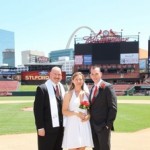

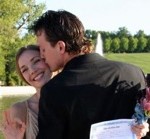
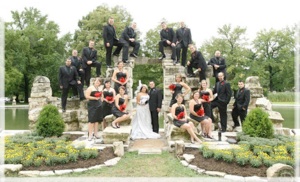
 In 2007, Emeritus Commissioner Lammert volunteered to redesign the plantings for the Flag Circle that would be consistent with the earliest images of the gardenesque style in which Tower Grove Park is noted. She prepared drawings that we submitted to the Orthwein Family Foundation which resulted in a grant of $200,000 for the renovation of the Flag Circle plantings. This plan involves new lighting, an irrigation system, electrical support for the irrigation system, grading, sod, new plantings, and replacement of trees. The essential plan emphasizes simplicity and reinforcement of the east-west axis through the Park.
In 2007, Emeritus Commissioner Lammert volunteered to redesign the plantings for the Flag Circle that would be consistent with the earliest images of the gardenesque style in which Tower Grove Park is noted. She prepared drawings that we submitted to the Orthwein Family Foundation which resulted in a grant of $200,000 for the renovation of the Flag Circle plantings. This plan involves new lighting, an irrigation system, electrical support for the irrigation system, grading, sod, new plantings, and replacement of trees. The essential plan emphasizes simplicity and reinforcement of the east-west axis through the Park. On Saturday, May 2, 1998, Mayor Clarence Harmon rededicated the oldest standing greenhouse west of the Mississippi. The renovated South Palm House was re christened in honor of Vernon W. and Marion K. Piper, principal donors of the restoration. According to David MacAdam (1883) , the South Palm House: “Was established for the purpose of supplying the park with ornamental tropical plants, which are used in summer for decorative groupings on the lawns, and in the winter are tastefully arranged within the structure, forming a very interesting feature for the inspection of visitors. It is built of brick, with ornamental pilasters and stone caps; is situated near the north gate, and is oblong in shape, with the long sides to the north and south. The principal doorway faces to the south, and is ornamented with brick columns, a stone coping and metal flower vases, and at the east and west ends there are smaller doors and similar ornamentation. The roof is supported on iron girders and covered in slate and glass, and the whole structure is substantial in character, carefully finished, and is an ornament to the park.” Although it was built in 1878 to house palms, the structure described by MacAdam is acoustically “live” — the perfect spot to listen to selections by Mozart, Verdi, Beethoven,. Rossini, Wagner & Gounod performed by eager musicians of the St. Louis Symphony Orchestra. A more modest structure than the glorious glass Palm House built at the Royal Botanic Gardens at Kew 1844-48 (and thus known to both Shaw and Gurney ), the symmetrical nine-bayed red-brick Piper Palm House was built from plans provided by George I. Barnett and Isaac Taylor modeled instead on another older London conservatory, the Kensington Palace Orangery. It is also in turn the clear predecessor of the 1882 Linnean House at the Missouri Botanical Garden. To the north of the 1878 structure stands a second and virtually identical Plant House built in 1885. The glass greenhouse to its rear dates from 1916.
On Saturday, May 2, 1998, Mayor Clarence Harmon rededicated the oldest standing greenhouse west of the Mississippi. The renovated South Palm House was re christened in honor of Vernon W. and Marion K. Piper, principal donors of the restoration. According to David MacAdam (1883) , the South Palm House: “Was established for the purpose of supplying the park with ornamental tropical plants, which are used in summer for decorative groupings on the lawns, and in the winter are tastefully arranged within the structure, forming a very interesting feature for the inspection of visitors. It is built of brick, with ornamental pilasters and stone caps; is situated near the north gate, and is oblong in shape, with the long sides to the north and south. The principal doorway faces to the south, and is ornamented with brick columns, a stone coping and metal flower vases, and at the east and west ends there are smaller doors and similar ornamentation. The roof is supported on iron girders and covered in slate and glass, and the whole structure is substantial in character, carefully finished, and is an ornament to the park.” Although it was built in 1878 to house palms, the structure described by MacAdam is acoustically “live” — the perfect spot to listen to selections by Mozart, Verdi, Beethoven,. Rossini, Wagner & Gounod performed by eager musicians of the St. Louis Symphony Orchestra. A more modest structure than the glorious glass Palm House built at the Royal Botanic Gardens at Kew 1844-48 (and thus known to both Shaw and Gurney ), the symmetrical nine-bayed red-brick Piper Palm House was built from plans provided by George I. Barnett and Isaac Taylor modeled instead on another older London conservatory, the Kensington Palace Orangery. It is also in turn the clear predecessor of the 1882 Linnean House at the Missouri Botanical Garden. To the north of the 1878 structure stands a second and virtually identical Plant House built in 1885. The glass greenhouse to its rear dates from 1916. With interior restoration complete, The Piper Palm House is now a destination for visitors and a venue for social events . The Piper Palm House’s Café Madeleine offers visitors a relaxing environment to plan or reflect on their park experience every Sunday from 10 a.m. – 2.00 p.m. During that time, visitors may enjoy a brunch buffet inside amid the palms and statues, or in warm weather outdoors on the Stupp Plaza. The adjacent lily ponds offer a tranquil backdrop against which to relax or visit with friends or family. The Piper Palm House is also available for a variety of events, including wedding receptions, graduation parties, and other celebrations. For information and reservations for Café Madeleine , call 314-575-5658. For information and reservations for The Piper Palm House, call 314-771-4410.
With interior restoration complete, The Piper Palm House is now a destination for visitors and a venue for social events . The Piper Palm House’s Café Madeleine offers visitors a relaxing environment to plan or reflect on their park experience every Sunday from 10 a.m. – 2.00 p.m. During that time, visitors may enjoy a brunch buffet inside amid the palms and statues, or in warm weather outdoors on the Stupp Plaza. The adjacent lily ponds offer a tranquil backdrop against which to relax or visit with friends or family. The Piper Palm House is also available for a variety of events, including wedding receptions, graduation parties, and other celebrations. For information and reservations for Café Madeleine , call 314-575-5658. For information and reservations for The Piper Palm House, call 314-771-4410. Although the Stupp Center and Memorial Garden is the most recent sizeable addition to Tower Grove Park, it was designed by its donors and the architectural firm of Hellmuth, Obata & Kassabaum to continue the park’s tradition of service to its surrounding community and of distinguished architecture in the midst of a carefully nurtured urban forest. Since December 16, 1982, when the center opened, the principal mission of the Stupp Center has been to serve as a sort of air-conditioned extension of the nearby Sons of Rest Pavilion. The latter pavilion takes its name from its popularity with older visitors to the park. The air-conditioned Stupp Center continues that mission. Built thanks to a bequest from Louise Stupp and matching funds from the U.S. Department of the Interior, it is home to a series of planned activities for our community’s seniors, as well as a popular site for weddings, rehearsal dinners, club and corporate meetings – it averages over 25,000 visitors a year! From the outside, the visitor first notices the two-tiered hexagonal roof of the center’s north end – a late twentieth century quotation in standing-seam metal of two of the park’s best loved summerhouses, the Turkish Pavilion and the Music Stand. In contrast to its metal roof, the walls of the L-shaped brick Stupp Center were designed to nestle – almost disappear – into their wooded setting. The view from within the Stupp Center is of the park itself. The windows of its octagonal great room bring the park, especially the Memorial garden with its eagle fountain, inside. A continuation of the Tower Grove Park tradition of public sculpture, the bronze eagle which takes flight from the red granite pillar in the fountain is the work of sculptor Walter Hauk. For information and reservations for The Stupp Center, call 314-771-4410. To receive the bi-monthly Stupp Center Newsletter, please call the Stupp Center at (314) 771-4122.
Although the Stupp Center and Memorial Garden is the most recent sizeable addition to Tower Grove Park, it was designed by its donors and the architectural firm of Hellmuth, Obata & Kassabaum to continue the park’s tradition of service to its surrounding community and of distinguished architecture in the midst of a carefully nurtured urban forest. Since December 16, 1982, when the center opened, the principal mission of the Stupp Center has been to serve as a sort of air-conditioned extension of the nearby Sons of Rest Pavilion. The latter pavilion takes its name from its popularity with older visitors to the park. The air-conditioned Stupp Center continues that mission. Built thanks to a bequest from Louise Stupp and matching funds from the U.S. Department of the Interior, it is home to a series of planned activities for our community’s seniors, as well as a popular site for weddings, rehearsal dinners, club and corporate meetings – it averages over 25,000 visitors a year! From the outside, the visitor first notices the two-tiered hexagonal roof of the center’s north end – a late twentieth century quotation in standing-seam metal of two of the park’s best loved summerhouses, the Turkish Pavilion and the Music Stand. In contrast to its metal roof, the walls of the L-shaped brick Stupp Center were designed to nestle – almost disappear – into their wooded setting. The view from within the Stupp Center is of the park itself. The windows of its octagonal great room bring the park, especially the Memorial garden with its eagle fountain, inside. A continuation of the Tower Grove Park tradition of public sculpture, the bronze eagle which takes flight from the red granite pillar in the fountain is the work of sculptor Walter Hauk. For information and reservations for The Stupp Center, call 314-771-4410. To receive the bi-monthly Stupp Center Newsletter, please call the Stupp Center at (314) 771-4122. The three grass tennis courts in Tower Grove Park – the last grass courts in the city! – apparently date to 1911, and are still the site of popular annual tournaments. Clay courts made their appearance in 1912. In 1952, twelve all-weather asphalt courts were installed. The new pavilion that formed an entrance to the new tennis courts was dedicated as a memorial to the founder of Tower Grove Park. Built at a cost of $72,225.73, the original Henry Shaw Memorial Pavilion was designed by the firm of Study, Farrar, and Majers in the Classicizing style of the Old Comfort Station designed in 1931 by Maritz and Young. The classical symmetry of its cubical central loggia was modified by the addition made to the east wing in 1966. When the addition by Schwarz and Van Hoefen was complete, the bronze tablet commemorating Henry Shaw’s generosity was moved from the Humboldt statue to the glass-doored loggia that joined the addition to the original tennis pavilion. Two more bronze plaques, dedicated to Dr. George T. Moore and the three generations of Gurneys who watched over the park from Shaw’s death until 1976, were added in 1958. You can contact the Tennis Pro at 771-7776 for more information about our Tennis Program.
The three grass tennis courts in Tower Grove Park – the last grass courts in the city! – apparently date to 1911, and are still the site of popular annual tournaments. Clay courts made their appearance in 1912. In 1952, twelve all-weather asphalt courts were installed. The new pavilion that formed an entrance to the new tennis courts was dedicated as a memorial to the founder of Tower Grove Park. Built at a cost of $72,225.73, the original Henry Shaw Memorial Pavilion was designed by the firm of Study, Farrar, and Majers in the Classicizing style of the Old Comfort Station designed in 1931 by Maritz and Young. The classical symmetry of its cubical central loggia was modified by the addition made to the east wing in 1966. When the addition by Schwarz and Van Hoefen was complete, the bronze tablet commemorating Henry Shaw’s generosity was moved from the Humboldt statue to the glass-doored loggia that joined the addition to the original tennis pavilion. Two more bronze plaques, dedicated to Dr. George T. Moore and the three generations of Gurneys who watched over the park from Shaw’s death until 1976, were added in 1958. You can contact the Tennis Pro at 771-7776 for more information about our Tennis Program. On the north side of the park, there is a stone house, which is the residence of the foreman, and near it a stable with ten stalls and shed for vehicles and tools. This was the work yard of the park, and affords ample accommodation for horses, sprinkling wagons, machinery, etc., and is located with a view to the convenience of employees, and not to interfere with the use of drives or walks. Designed (probably by Francis Tunica) in a deliberately rustic style befitting its practical use, the two principal buildings of the stable complex were constructed of rough coursed rubble for $7,000 in 1870. In keeping with the designs proposed for such structures by Andrew Jackson Downing and J. C. Loudon, even these work-a-day buildings had decorative elements — the shed-roof porch of the house was given a fretwork frieze of Chinese Chippendale design, and the stone stable a belfry.
On the north side of the park, there is a stone house, which is the residence of the foreman, and near it a stable with ten stalls and shed for vehicles and tools. This was the work yard of the park, and affords ample accommodation for horses, sprinkling wagons, machinery, etc., and is located with a view to the convenience of employees, and not to interfere with the use of drives or walks. Designed (probably by Francis Tunica) in a deliberately rustic style befitting its practical use, the two principal buildings of the stable complex were constructed of rough coursed rubble for $7,000 in 1870. In keeping with the designs proposed for such structures by Andrew Jackson Downing and J. C. Loudon, even these work-a-day buildings had decorative elements — the shed-roof porch of the house was given a fretwork frieze of Chinese Chippendale design, and the stone stable a belfry. A comfort station was built near the Children’s Playground Pavilion in 1913, using material salvaged from the demolished East Gate Lodge. It has a stone foundation, stuccoed walls, exposed rafters, and a green-glazed tile roof. The West End Comfort Station erected in 1967 has detailing similar to the addition built the previous year. It was designed by George W. Werner, chief architect for the City’s Board of Public Service. A one-story structure, it has a flat roof of two heights. The squared-rubble, broken course walls project beyond the corners of the building, giving it a sculptural presence. Brick panels are inserted under some of the “clerestory” windows.
A comfort station was built near the Children’s Playground Pavilion in 1913, using material salvaged from the demolished East Gate Lodge. It has a stone foundation, stuccoed walls, exposed rafters, and a green-glazed tile roof. The West End Comfort Station erected in 1967 has detailing similar to the addition built the previous year. It was designed by George W. Werner, chief architect for the City’s Board of Public Service. A one-story structure, it has a flat roof of two heights. The squared-rubble, broken course walls project beyond the corners of the building, giving it a sculptural presence. Brick panels are inserted under some of the “clerestory” windows. Just to the north of the 1878 Palm House, is a virtually identical structure that was built in 1885, presumably to expand the Park’s capacity for over wintering tropical plants. For many years, this Plant House served as a maintenance shop. With the help of a large number of donors, led by Vernon W. Piper, this handsome building, now to be known as the Piper Plant House, has been completely renovated. In 2002, it begins its new life as the Park headquarters, with information desk, offices, library, conference rooms, and archives. This facility is definitely worth a visit.
Just to the north of the 1878 Palm House, is a virtually identical structure that was built in 1885, presumably to expand the Park’s capacity for over wintering tropical plants. For many years, this Plant House served as a maintenance shop. With the help of a large number of donors, led by Vernon W. Piper, this handsome building, now to be known as the Piper Plant House, has been completely renovated. In 2002, it begins its new life as the Park headquarters, with information desk, offices, library, conference rooms, and archives. This facility is definitely worth a visit. The Flag Circle is one of the earliest landscape features of Tower Grove Park. It is a highly visible feature centered at the axis of the roads and pathways in the park. In the 1875 Compton and Drey drawing, it shows a flag flying in the Flag Circle. When the Shakespeare statue was installed in 1878, the photos from this event also show a flag pole present. On March 25, 1880, a mulberry tree was planted in the Flag Circle commemorating Adelaide Nelson’s visit to the park.
The Flag Circle is one of the earliest landscape features of Tower Grove Park. It is a highly visible feature centered at the axis of the roads and pathways in the park. In the 1875 Compton and Drey drawing, it shows a flag flying in the Flag Circle. When the Shakespeare statue was installed in 1878, the photos from this event also show a flag pole present. On March 25, 1880, a mulberry tree was planted in the Flag Circle commemorating Adelaide Nelson’s visit to the park.